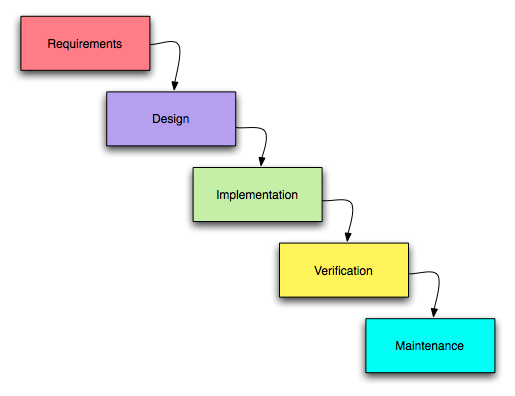Software Development Processes are the basic models that give us a rough guideline on how to organize all of the work involving the creation of a software product.
All of the methodologies are based on the Software Development Life Cycle.

Development process
Here are some of the main approaches:
WATERFALL ( read a bit more… )
A linear model that follows a sequential flow, work is split into many phases and development happens first in one phase, gets completed and then moves to the next phase, the phases don’t overlap.
This was the first approach invented, it is very straight forward and easy to understand. This process works best for projects that do not change requirements in late stages of development because it is very hard to make changes and implement new features after early stages.
PROTOTYPING
This model focuses on creating protoypes for the client so he/she gets a better idea of how the requirements they gave are being implemented. This is a good model for testing and reduces the misunderstanding gap between developer and client.
Some types of prototyping methodologies are:
-Throwaway Prototyping
-Evolutionary Prototyping
-Incremental Prototyping
Although it is better for user involvement it can also lead to confusion over the protoypes and the final product.
SPIRAL
This method involves combining design and prototyping. This model is used mostly for expensive and complex projects, these project is composed mostly of small waterfall models, the phases go in the same order, and then prototypes are built and simulated.
This model is good for budget estimating and issue discovery at early stages of development, but it also involves a lot of time and high costs and has quite limited re-usability.
AGILE or EXTREME PROGRAMMING (read a bit more… )
OTHERS
-Lightweight Methodologies
-Rapid Application Development
-Code Continue reading "The Software Development Process"









